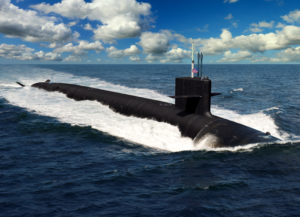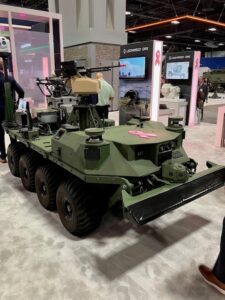Defense Daily
-
 Advanced / Transformational Technology
Advanced / Transformational TechnologyApplied Intuition, SNC Partner On Autonomy For Mobile Air Defense Systems
Vehicle autonomy solutions developer Applied Intuition is integrating its technology into mobile missile defense and counter-drone platforms developed by SNC to reduce personnel risk, minimize manpower needs, and lower costs […]
-
Tuesday, December 2, 2025
- MEROPS Counter-Air Drones Cited As Example Of Benefit Of U.S. Tech In Ukraine
- U.S. OKs Nearly $1.5 Billion In Potential Aircraft Support Deals With Saudi Arabia, Bahrain
- First Columbia-Class Sub Bow Section Arrives At Electric Boat
- Heven AeroTech Raises $100 Million To Scale Production, Develop Quantum Capabilities
- Army Awards BAE Systems More Than $390 Million For Bradley A4 Upgrades
- Israel’s Axon Vision Partners With Leonardo DRS On AI For Autonomous Counter-Drone Solutions
-
Tuesday, December 2, 2025
- MEROPS Counter-Air Drones Cited As Example Of Benefit Of U.S. Tech In Ukraine
- U.S. OKs Nearly $1.5 Billion In Potential Aircraft Support Deals With Saudi Arabia, Bahrain
- First Columbia-Class Sub Bow Section Arrives At Electric Boat
- Heven AeroTech Raises $100 Million To Scale Production, Develop Quantum Capabilities
- Army Awards BAE Systems More Than $390 Million For Bradley A4 Upgrades
- Israel’s Axon Vision Partners With Leonardo DRS On AI For Autonomous Counter-Drone Solutions
-
 Navy/USMC
Navy/USMCFirst Columbia-Class Sub Bow Section Arrives At Electric Boat
The bow section of the first Columbia-class ballistic missile submarine arrived at General Dynamics’ [GD] Electric Boat South Yard assembly building in Groton, Conn. last week, enabling it to start […]
Tagged in: -
 International
InternationalU.S. OKs Nearly $1.5 Billion In Potential Aircraft Support Deals With Saudi Arabia, Bahrain
The State Department on Monday said it has approved nearly $1.5 billion in potential foreign military sales (FMS) with Saudi Arabia and Bahrain for aircraft-related work. For Saudi Arabia, there […]
-
 Army
ArmyArmy Awards BAE Systems More Than $390 Million For Bradley A4 Upgrades
The Army has awarded BAE Systems more than $390 million to continue delivering upgraded Bradley fighting vehicles, the company said on Monday. BAE Systems said work is already underway on […]
-
 International
InternationalMEROPS Counter-Air Drones Cited As Example Of Benefit Of U.S. Tech In Ukraine
Early next year, front-line Ukrainian units are to receive drones with customized sensors and payloads within days of those units ordering such drones. The Ukraine Ministry of Defence’s (MoD) Drone […]
-
 Unmanned Systems
Unmanned SystemsIsrael’s Axon Vision Partners With Leonardo DRS On AI For Autonomous Counter-Drone Solutions
Israel’s Axon Vision on Monday said it is partnering to bring its artificial intelligence automation technology to counter-drone solutions provided by Leonardo DRS [DRS] for the U.S. defense market. Axon […]
-
 Business/Financial
Business/FinancialHeven AeroTech Raises $100 Million To Scale Production, Develop Quantum Capabilities
Drone developer Heven AeroTech on Monday said it has raised $100 million in a new funding round for expanding its manufacturing infrastructure, fielding infrastructure that supports its hydrogen-powered drones and […]
-
Monday, December 1, 2025
- Defense Watch: Ship Assessment, Golden Dome, C-sUAS Summit, NGA Contracts
- Navy Investing In Guns, Pushing For Counter-UAS Mission With HVPs
- 96 AH-64E Apaches For Poland In Nearly $4.7 Billion Award, Boeing Says
- GAO Points To Continued Challenges With Coast Guard’s Offshore Patrol Cutter
- Senate Wants Study of Alternate Heavy and Super Heavy Launch Sites
- Quantum Tech Firm IonQ Invests In, Partners With, Drone Company Heven


